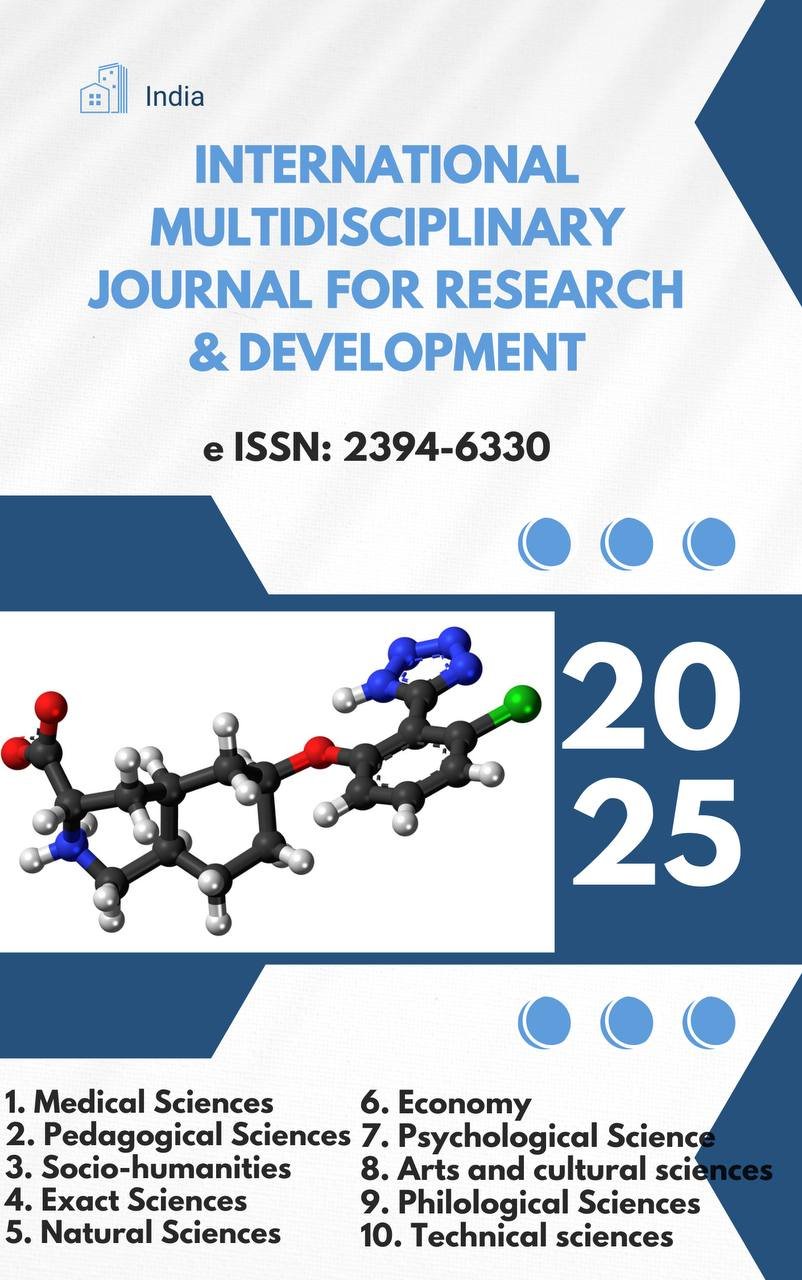THE INTERCONNECTION BETWEEN TRADITIONAL MEDICINE AND PHARMACOGNOSY CONTENT EXPLORING THE SIMILARITIES AND DIFFERENCES BETWEEN THE TWO DISCIPLINES THROUGH PLANT BASED HEALING PRACTICES

Abstract
This article highlights the global significance of traditional plant-based medicines, emphasizing their longstanding use in various cultural and medicinal systems such as AYUSH, Traditional Chinese Medicine (TCM), and Islamic medicine. It explores how traditional healers have historically used various plant parts in different formulations to treat illnesses and how this knowledge has been passed down through generations. Despite the existence of around 30,000 medicinal plants used globally, only a small percentage have been scientifically studied for their bioactivity. The article explains the process of drug development from plant sources, including extraction, isolation, characterization, and structural elucidation of bioactive compounds. It underscores the integration of modern analytical techniques like NMR, mass spectrometry, chromatography, and bioassays with ethnobotanical knowledge to validate and standardize traditional remedies. The collaboration between botanists, ethnobotanists, pharmacologists, chemists, and biotechnologists is considered essential for developing safe and effective plant-derived drugs. The article concludes that although drug development from plants is time-consuming and costly, it remains a reliable and authentic approach to discovering new medicines based on centuries-old traditional knowledge.
Keywords
Traditional Medicine, Medicinal Plants, Plant-based Drugs, Ethnobotany, Phytochemicals, Bioactive Compounds, Drug Discovery, Herbal Medicine, Pharmacognosy, Botanical Identification, Extraction Techniques, Structural Elucidation, NMR and Mass Spectrometry, Bioassays, Pharmacological Activity, AYUSH, Traditional Chinese Medicine, Indigenous Knowledge, Herbal Pharmacology, Natural Product Chemistry
References
- Gurib-Fakim, A. (2006). Medicinal plants: traditions of yesterday and drugs of tomorrow. Molecular aspects of Medicine, 27(1), 1-93.
- Traditional medicine has a long history of contributing to conventional medicine and continues to hold promisehttps://www.who.int/news-room/feature-stories/detail/traditional-medicine-has-a-long-history-of-contributing-to-conventional-medicine-and-continues-to-hold-promise
- Ansari, S. (2021). Overview of traditional systems of medicine in different continents. In Preparation of Phytopharmaceuticals for the Management of Disorders (pp. 431-473). Academic Press.
- Balkrishna, A. (2023). World herbal encyclopedia. Journal of Research in Ayurvedic Sciences, 7(Suppl 1), S92-S94.
- Khojimatov OK. 2021. Medicinal plants of Uzbekistan (properties, application and rational use). Manaviyat Publishing House. 328. (in Russian)
- Elujoba, A. A., Odeleye, O. M., & Ogunyemi, C. M. (2005). Traditional medicine development for medical and dental primary health care delivery system in Africa. African journal of traditional, complementary and alternative medicines, 2(1), 46-61.
- K 1 K.J. Willis (Ed.), State of the World’s Plants 2017, Royal Botanic Gardens, Kew (2017)
- Feyisa, K., Yismaw, M. B., Yehualaw, A., Tafere, C., Demsie, D. G., Bahiru, B., & Kefale, B. (2024). Medicinal plants traditionally used to treat human ailments in Ethiopia: A systematic review. Phytomedicine Plus, 4(1), 100516.
- Allkin, B. (2017). Useful plants–Medicines: At least 28,187 plant species are currently recorded as being of medicinal use.
- Nakanishi, K. (1999) An historical perspective of natural products chemistry. In: Sankawa, U. (ed.) Comprehensive Natural Products Chemistry. Vol. 1. Polyketides and Other Secondary Metabolites Including Fatty Acids and Their Derivatives. Elsevier, Amsterdam, pp xxiii-xl
- Kinghorn, A. D. (2001). Pharmacognosy in the 21st century. Journal of pharmacy and pharmacology, 53(2), 135-148.
- Enwonwu, C. O (2003). Global Trends in the use of Complimentary Medicine Proceedings of the 2nd Dr. David Barmes’ Memorial Public Health Symposium, 25th March 2003, organized by the Regional Centre for Oral Health Research & Training for Africa Jos in collaboration with WHO Regional Office, Brazzaville.
- Greenwood, D. (1992). The quinine connection. Journal of Antimicrobial Chemotherapy, 30(4), 417-427.
- Ugo R, C., & Collaborators: Alexander Leland Colon Miguel Frost Danielle Jhangiani Rita K Takiar Neeru Tam Nilsa Walters Milda Yuen Stella. (1998). Determination of reserpine and rescinnamine in Rauwolfia serpentina powders and tablets: collaborative study. Journal of AOAC International, 81(2), 373-380.
- O’Brien, R. D. (1974). Atropine. In Poisons of plant origin (pp. 157-178). Boston, MA: Springer US.